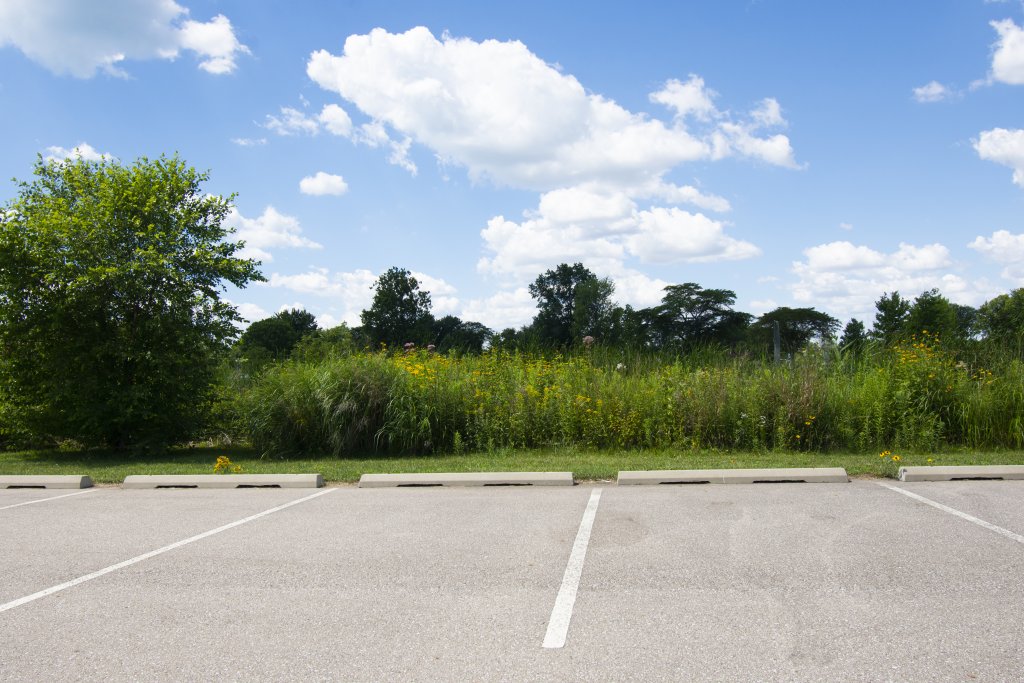Where Does Rain Go and What is a Bioswale?!
Author: Erin Parker, Eastern District Interpretive Services Supervisor
Where does water go when it rains? Imagine you could shrink to the size of a single droplet and let’s find out!
First, where you land matters a lot to how quickly you travel and what happens to you along the way. What would happen if you fall on a meadow, forest, or marsh? These soft, vegetated surfaces slow your journey, and even heavy rainfalls and large snowmelt events can be absorbed into the soil and plants. But what if you’ve hit a parking lot or road instead? The path you take is going to be quite different. We call water that falls on these hard, nonporous surfaces stormwater.
Stormwater isn’t readily absorbed and instead, it flows along collecting debris, sediment, pet and wildlife wastes, road salt, and even liquids like gasoline or oil as gravity pulls it into drains, ditches, or culverts. Your journey as a water droplet was much faster when there weren’t any soft surfaces to slow you down. You might have even become heated from the warm, hard surfaces as you travel across them. Everything you encountered, from animal waste to temperature increases, may impact the water at your final destination, which is usually the nearest lake or stream. Luckily, there are many ways that we can manage stormwater before it enters a natural body of water.
Bioswales, such as those installed throughout Lake St. Clair Metropark, are one of these ways. Bioswales are constructed low-lying areas that help funnel stormwater off of hard surfaces. Unlike a metal culvert designed to move water quickly off a road, bioswales are planted and intended to function like a natural marsh.

Water that falls on parking lots and roads enters the swales and its flow is slowed by the plants. Roots and soil soak up some of the water and allow sediments and other pollution to settle or be taken up by the plants. By the time water exits the bioswales and enters Lake St Clair, it is cooler, moving more slowly, and the pollution carried along with it has been reduced. This lessens the negative impact stormwater has on water quality. By preventing things like fertilizers and organic material from entering the lake, algae blooms are reduced, and even bacteria such as E. coli is diminished. Reducing stormwater pollution helps to keep the beach open for swimming, fishing, and boating. The bioswales empty into Point Rosa Marsh instead of directly into the Lake, which further reduces unwanted inputs. Along with helping with stormwater flow, bioswales and restored marsh add important habitat for a variety of park wildlife.
Your water droplet journey may be at an end, but there’s a lot that we can all do to reduce stormwater contamination and to protect our favorite lakes. From individual actions like appropriate disposal of pet waste and litter to community-level decisions about reducing hard surfaces, each of us can play a part in keeping our waterways clean. Join us in being a steward of the environment and consider the part you play in the journey of stormwater.
